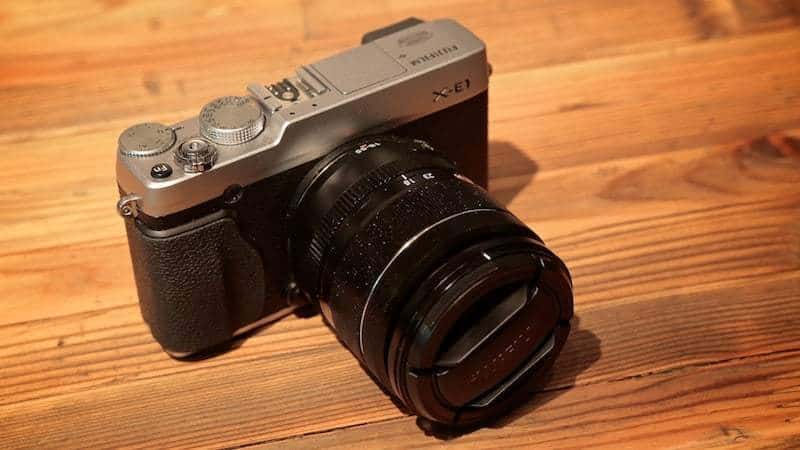A Field Test of the New Fujifilm X-E1. Just a pretty face, or serious travel camera?
Of all skills related to travel, I love photography the most. Photography is above all else, art, although some may take a purely mechanical approach to the image
capture, most of us genuinely care about how the image develops. Given that photography is art, it can also push the limits of the form of capture, the camera.
Certainly, I have the greatest overall success with my Canon SLRs and bombproof lenses, but that kit can be heavy and bulky, and even dare I say- soulless.
Enter the retro camera craze, a crop of new digital bodies that look 50-years old, but are packed with modern technology and some serious hardware. From the
design perspective, the Leica is without question the most lust-worthy, the M9 operating nearly identical to the film range finders that proceeded it. However, for
those of us unwilling to spend $20,000 on a proper Leica kit, there are some highly effective options that not only look fantastic in hand, but perform at the pixel
level too.
I am a sucker for vintage stuff. Vintage motorcycles, vintage cameras, vintage maps – all of it. So when I decided to ride a very cantankerous Ural Solo
from Portland to Prescott, I brought along an equally cantankerous camera, the Fujifilm X-E1. We can dispense with the visual assessment early – the X-E1
looks fantastic, much like the Ural, and has a sense of heft and presence few of their modern cousins possess. Metal abounds, with a cast top and bottom plate
sandwiched between a metal housing covered in perfectly classic faux leatherette.

In use, the XE-1 was also much like the Ural, with most of it working surprisingly well, but some simply not working at all. The controls are minimal, which
I preferred (the Ural only has a throttle and clutch lever – who needs turn signals and a speedometer), but some of the controls made for some legitimate concerns.
For example, the exposure compensation dial is heavily knurled and too light in resistance. So as a result, even removing the camera from its case can result in the
next five images being -2 on exposure. Some of the menu operation was also quite frustrating, little of it intuitive. We also experienced a complete failure of
the flash unit. In the 30 days we had the camera, it never worked – once. Using the menu or even manually popping the flash up, it would never fire. We also
experienced a half-dozen complete lock-ups of the camera, failing to boot correctly. Freezing certain settings or just becoming completely unresponsive. But all is
not lost.
.jpg)
California Coast: Image taken X-E1
As my weeks with the camera continued, I overcame most of the issues and just started to enjoy the operation and quality of the product. The images
proved quite nice too, particularly the jpg. Autofocus was slow, but for composed shots, the camera was a pleasure. The lens was also particularly sharp and
extremely well made. The focal range proved sufficient for travel by motorcycle, but I could have used a continuous F2.8 on many occasions. Fuji can make
fast zooms (look at the X20s F2.0), so it will be nice to see some faster options in the future.
.jpg)
After the Ural ride, I took the X-E1 out for another adventure, this time the Overland Journal open house in Prescott, AZ. On the trail, the camera was a
pleasure to use, controls falling better to hand and the excellent electronic viewfinder (EVF) aiding composition. In fact, I would say that beyond the charm of the
vintage styling and quality construction, the most impressive attribute of the Fuji is the EVF. It is bright, clear and finely resolved, proving an excellent view of the
intended subject.
.jpg)
Here is a shot unintentionally underexposed due to the sensitive exposure compensation dial. -2 stops on this one.
Overall, I really enjoyed the camera, and since I loved the quality construction and vintage styling, it inspired me to take better pictures. In the past, I have
also traveled with the Fujifilm X10, and experienced excellent results and near bulletproof reliability. However, the issues with the X-E1 controls and software
reliability left me concerned about the suitability for serious travel. If your Russian Ural breaks down in the middle of Peru, it will likely be a great story, but
if your camera stops working during Dia de los Muertos in Guatemala, well, then that would be no fun at all. . .
Pros:
Classic looks
High quality construction
Beautiful Electronic Viewfinder
Cons:
Glitchy software
Exposure compensation dial rotates unintentionally
Flash never worked on our test unit
Resources:
XE-1 at Fujifilm.com

The flash never functioned on our test unit

The lens is beautifully constructed and includes image stabilization and aperture control. During my travels with the camera, I was left wanting something
faster, not only for low light performance, but for depth of field. 
Once you install a tripod mount, the battery and data card is inaccessible. Move the 1/4 20 UNC tripod mount to the left comrades.


